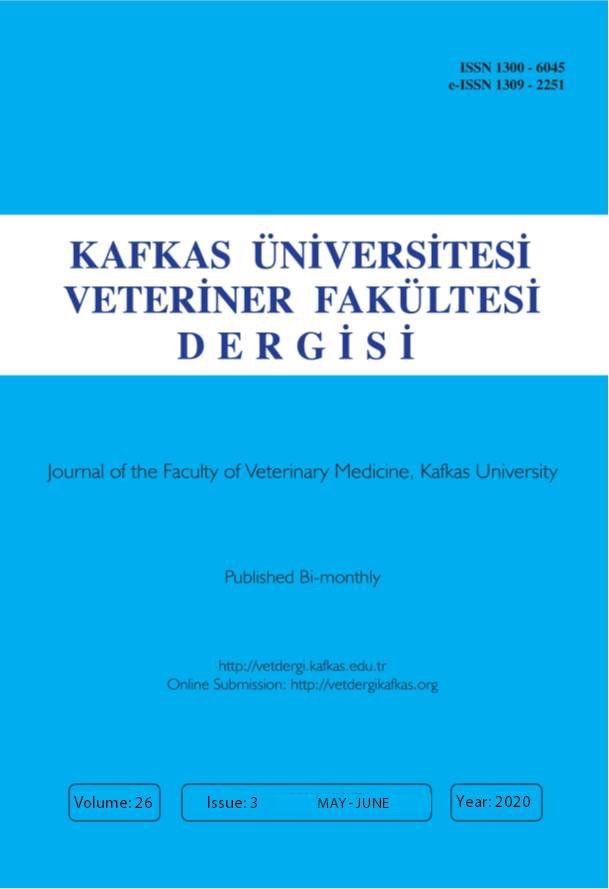
This journal is licensed under a Creative Commons Attribution-NonCommercial 4.0 International License
Kafkas Üniversitesi Veteriner Fakültesi Dergisi
2020 , Vol 26 , Issue 3
Comparison of Culture and PCR for Detection of Field Isolates of Bovine Milk Mollicutes
1Department of Animal Production, Technical Agricultural College, Northern Technical University, Mosul, IRAQ2University of Adelaide, School of Animal and Veterinary Sciences, South Australia, AUSTRALIA
3Davies Centre, The University of Adelaide, School of Animal and Veterinary Sciences, South Australia, AUSTRALIA
4Tabriz University, Department of Veterinary Clinical Sciences, Tabriz, IRAN
5South East Vets, South Australia, AUSTRALIA
6Australian Centre for Antimicrobial Resistance Ecology, The University of Adelaide, School of Animal and Veterinary Sciences, South Australia, AUSTRALIA DOI : 10.9775/kvfd.2019.23106 Mycoplasma mastitis raises significant concerns in the dairy industry worldwide. The study objective was to develop an accurate and rapid screening method for identification of field isolates of Mycoplasma and Acholeplasma species and investigate relative merits of conventional microbial culture versus PCR-based method for detecting Mycoplasma and Acholeplasma species in bovine milk. A total of 368 milk samples collected at individual cow level from a single dairy farm in South Australia, 192 (52%) tested positive for mollicutes using a conventional culturebased method. DNA extracted directly from milk and used for amplification through specifically designed universal mollicutes PCR-based method. Of them, 269 (73%) tested positive. Sequencing results of 30 positive samples targeting the 16S rRNA gene, showed five different mollicutes species involved, including Acholeplasma laidlawii, Acholeplasma axanthum, Mycoplasma arginini, Mycoplasma bovirhinis, Mycoplasma bovis. According to these results, species-specific PCR was conducted on all samples. DNA amplifications using species-specific PCR yielded 256 (70%) positive mollicutes samples. The developed universal PCR demonstrated best concordance with species-specific PCR (Cohen"s Kappa = 0.747±0.031). Co-infection by two or more of the above-mentioned mollicutes showed highest prevalence. It is recommended surveying mollicutes using the universal PCR used in this study. The PCR system used in this study showed significant rapidity and sensitivity compared to the conventional bacteriological culture method for screening Mycoplasma and Acholeplasma species in dairy herds. Keywords : Mycoplasma, Mastitis, Dairy cattle, Acholeplasma










